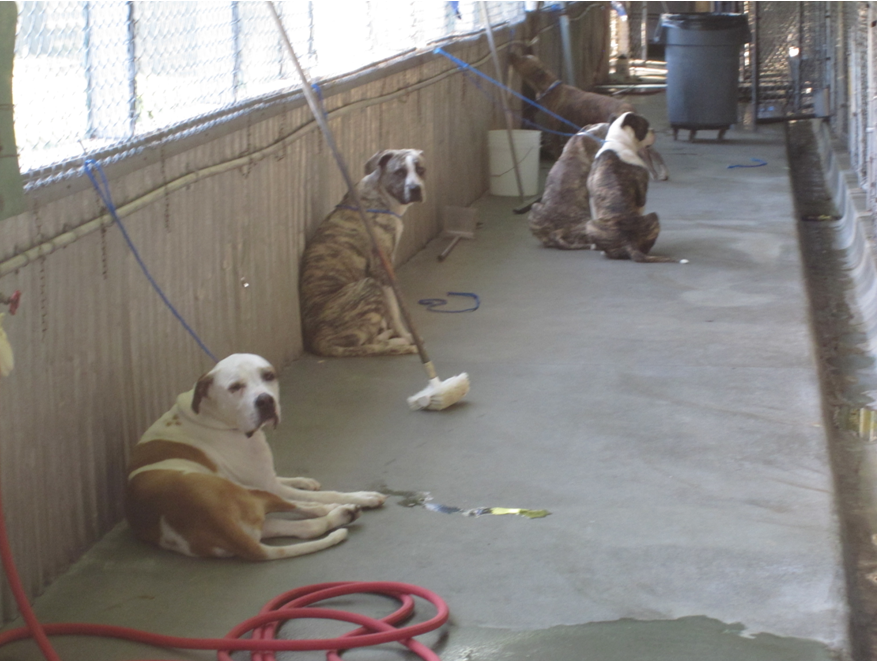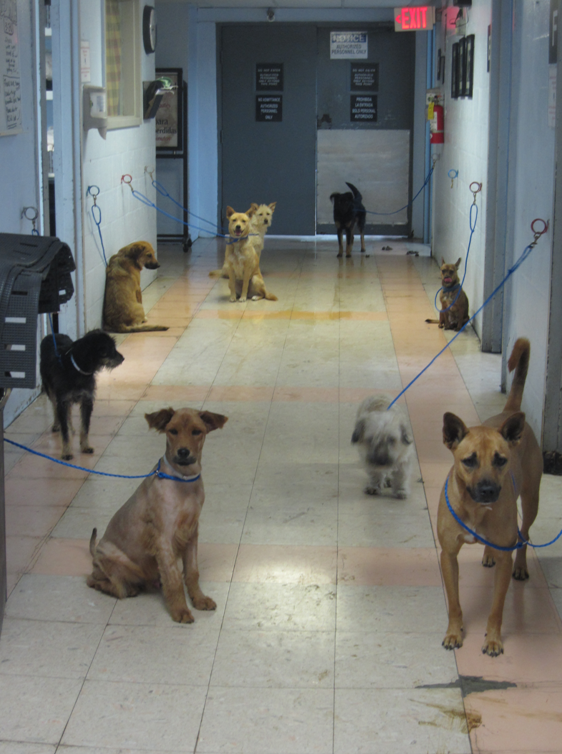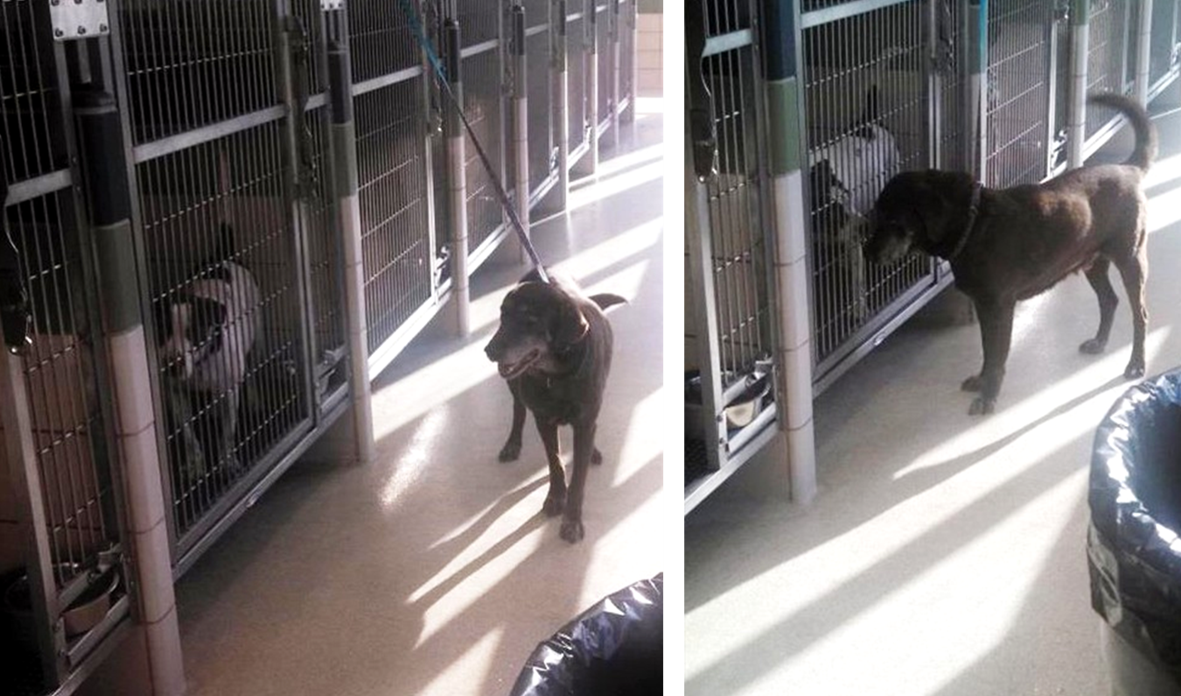Module 5: The Case of the Snotty Cats
Sanitation Challenges for Dogs
In shelters that house dogs in single compartment runs or Shoreline cages, staff are challenged every day by where to put the dogs while they clean their housing. Here are some of the choices they have to make. As you view them, think about the impact on health and welfare based on the ASV Guidelines, the Five Freedoms, the Five Domains, Fear Free principles, and the AVMA Animal Welfare Principles. Tethering of dogs to walls or adjacent runs while their housing is cleaned also promotes disease transmission.



Sanitation is best facilitated by housing dogs in a double compartment run with a central guillotine door that divides the compartments. The central guillotine door is used to confine the dog to the compartment that is not being cleaned. This allows the dog to stay in its house with minimal handling to reduce stress, potential spread of disease, and exposure to water and chemicals. Review the sanitation best practices for dogs.
Test Your Knowledge
Examine the following protocols for daily sanitation of double compartment runs with a central guillotine door occupied by the same dog.

